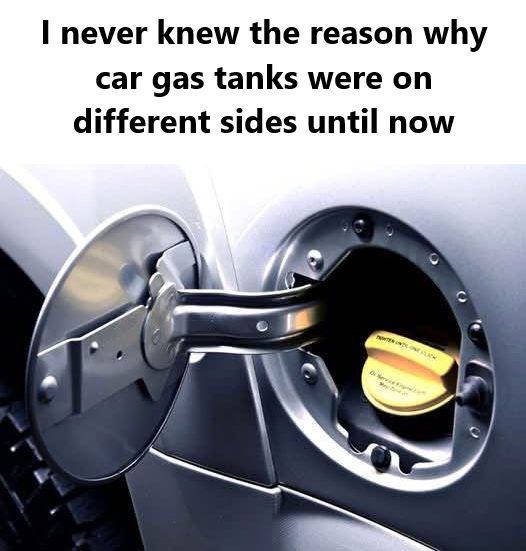Have you ever found yourself puzzling over the seemingly random placement of gas tanks on cars? Some reside on the right side, while others stubbornly cling to the left. This seemingly trivial detail actually reveals a fascinating interplay of safety regulations, design considerations, and perhaps a touch of driver convenience.
Safety First: A Regulatory Imperative
One might initially assume that a centrally located gas tank in the rear of every vehicle would be the most logical and efficient solution. However, safety regulations categorically prohibit this arrangement. The potential for catastrophic consequences in a rear-end collision is simply too great. A centrally positioned gas tank would be highly susceptible to rupture, leading to a dangerous fuel spill and potentially igniting a fire.
To mitigate these risks, stringent safety regulations dictate that gas tanks must be positioned on the widest part of the vehicle, away from critical components such as fuel lines, exhaust systems, and electrical wiring. This strategic placement minimizes the risk of fuel leaks and potential fires in the event of an accident.
Design Considerations and Driver Convenience: A Balancing Act
While safety regulations provide a crucial framework, the final placement of the gas tank is largely influenced by a myriad of factors, including:
-
- Vehicle Design: The overall shape and size of the vehicle, as well as the placement of other components under the hood and in the chassis, significantly influence the optimal location for the gas tank.
- Engineering Constraints: Factors such as weight distribution, center of gravity, and aerodynamics must be carefully considered to ensure optimal vehicle performance and handling.
- Driver Convenience (A Contributory Factor?): While not a primary determinant, driver convenience may play a minor role in gas tank placement. In countries like the United States and Germany, where drivers operate on the right side of the road and sit on the left side of the car, it is generally more convenient to have the gas tank on the left side. This allows drivers to easily access the fuel pump without excessive maneuvering. Conversely, in countries where driving occurs on the left side of the road, the gas tank is typically located on the right side. However, this is not a universal rule, and automakers like Nissan demonstrate this by producing vehicles with gas tanks on either side depending on the specific model.
The Gas Station Efficiency Myth:
Another popular theory suggests that having gas tanks on different sides of vehicles helps to prevent long lines at gas stations. The logic behind this theory is that with pumps on both sides, drivers can easily line up on either side, facilitating quicker refueling. While this may seem plausible, it is highly unlikely that automakers prioritize gas station efficiency when making such critical design decisions.
Identifying Your Car’s Gas Tank Location: A Simple Trick
CONTINUE READING ON THE NEXT PAGE 🥰💕

